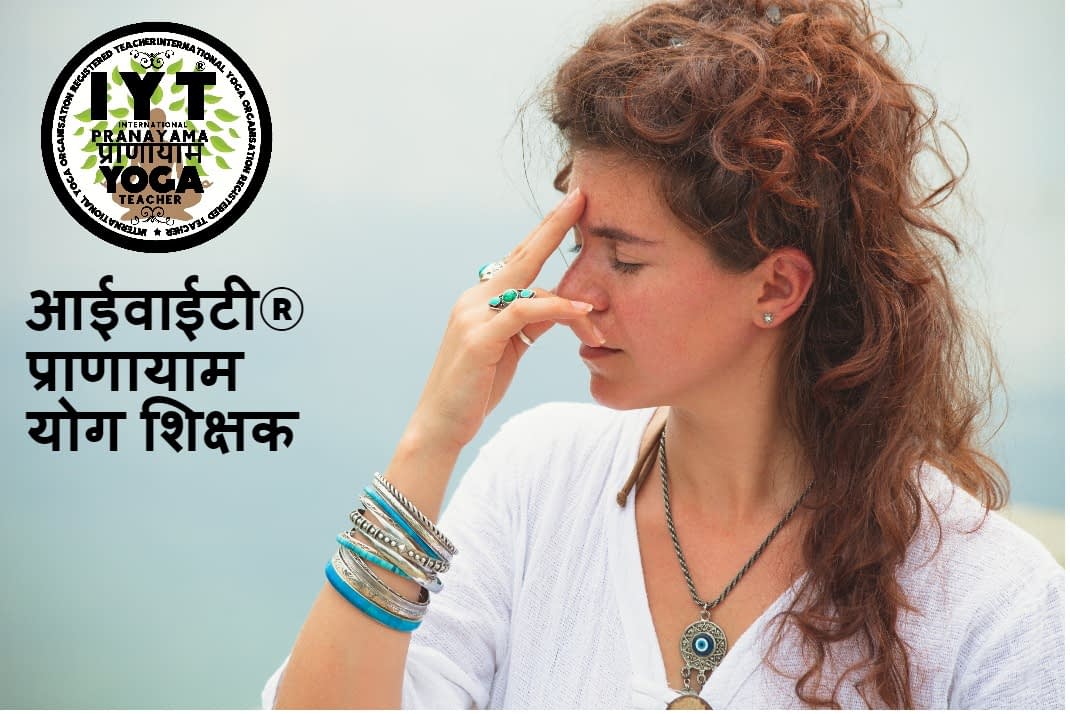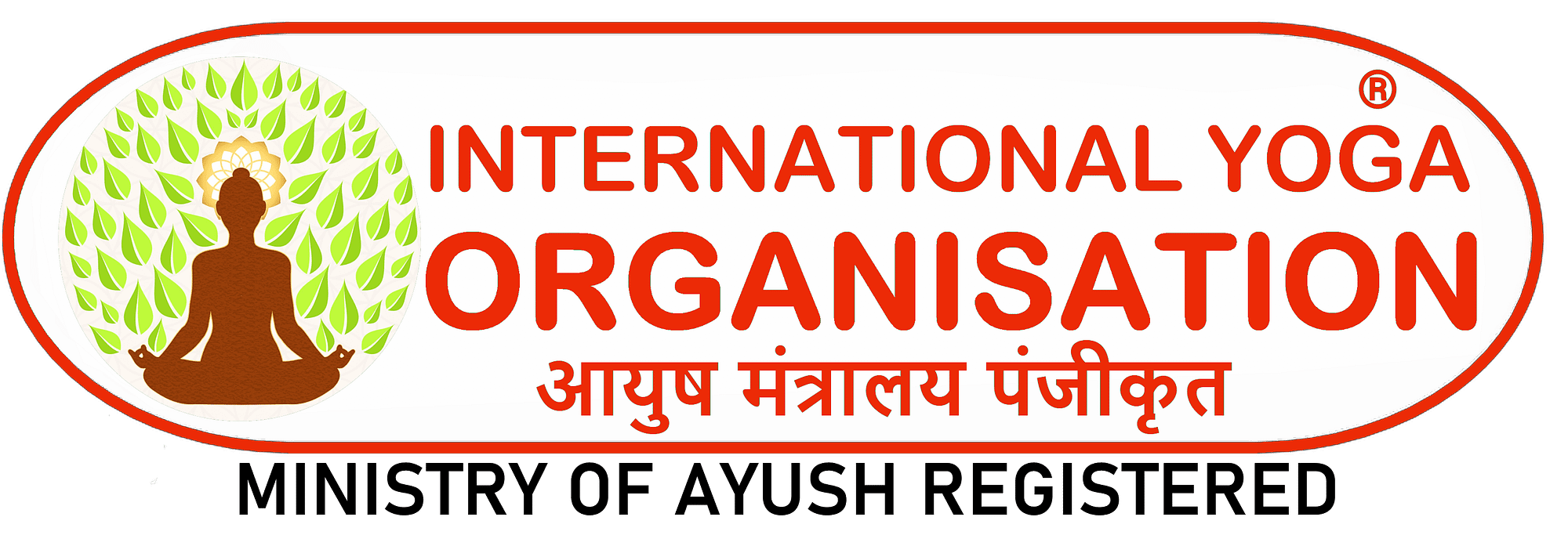
The Yoga of Breathing
Yoga – International Yoga Organisation
The classical or literary language of India is Sanskrit. The word itself means “well or completely formed, perfected.” Sanskrit is indeed a beautiful and highly evocative language. Many of its words remind me of a Russian doll, which opens up to reveal a smaller doll inside, and which in its turn opens to reveal an even smaller doll, and so on and on until the littlest doll is exposed. Even though I don’t know the language well, I can find my way around in a Sanskrit- English dictionary. I like to look up words in the yoga lexicon and pull them apart to see what’s inside. This often gives me new insights into my practice. We’ll be unraveling Sanskrit words as we go through this guide. Your practice will be enriched by the hidden meanings in this perfect language.
Let’s start with a word that may already be familiar to you —the Sanskrit verb yuj, which means to “yoke” or “harness.” It’s a relic of an age, many thousands of years ago, when Indian warriors rode into battle in chariots. These wagons typically carried an archer and his driver or charioteer and were drawn by two horses, which had the reputation of being rather ferocious. “At his deep neigh,” sings one old hymn about the cry of a warhorse, “like the thunder of heaven / the foemen tremble in fear.” It was the charioteer’s task to hitch these barely tamed beasts to the chariot, no small feat in the days before the invention of the yoke. He needed both extraordinary bravery and skill, and as a consequence, his position was highly esteemed. In the everyday language, yuj assumed the sense of “unite, connect, add, bring together,” as well as—since the occupation of yoking or harnessing implied that the charioteer had learned a particular technique that got the chariot up and running—“make ready, prepare, set to work, employ, apply.” Two notions, then, of a desired end and its means are conveyed by the verb yuj and its several derivatives, including the masculine noun yoga. The practice of yoga is very old. There were surely contemporaries of our charioteer who were engaged in some form of yoga, though it probably didn’t exactly resemble what we call yoga today.
In general, yoga has four goals:
- Regeneration or health, and the end of suffering
- Skillful action
- Integration or self-knowledge
- Liberation
In much of the sacred literature of India, liberation (moksha) is explained as the yoking or joining of the embodied soul (jiva-atman) to the Great Self (paramaatman). Both yoke and join, by the way, are cognate with yuj and yoga. This is a pointed allusion to the charioteer, his horses, and the chariot. One of the most famous parables in the Upanishads recalls and plays upon this root meaning: Know thou the soul (atman, self) as riding in a chariot, The body as the chariot.
Know thou the intellect (buddhi) as the chariot-driver, And the mind (manas) as the reins. The senses (indriya), they say, are the horses; The objects of sense, what they range over. . . . He who has not understanding, Whose mind is not constantly held firm— His senses are uncontrolled, Like the vicious horses of a chariot-driver. He, however, who has the understanding of a chariotdriver, A man who reins in his mind— He reaches the end of his journey, The highest place of Vishnu.1 Yoking is accomplished in a wide variety of ways, depending on which school of yoga you follow. In The Shambhala Encyclopedia of Yoga, the scholar Georg Feuerstein catalogues nearly forty different schools of yoga suitable for different personalities or temperaments. Six schools are generally considered principal: classical or raja (royal), hatha (forceful), mantra (hymn), jnana (wisdom), bhakti (devotion), and karma (selfless action). It seems fitting that a word so closely associated with the meaning of union can embrace so many disparate schools. While this union of the embodied self and the Great Self (paramaatman or brahman) is usually the stated goal of yoga practice, it’s not always the case. The most prominent exception is the classical school of Patanjali, known as Raja- Yoga. Patanjali doesn’t recognize a Great Self, though he does acknowledge a deity called the Lord (Ishvara), considered a special self (purusha-vishesha) among an infinite number regular selves (purusha). Patanjali defines classical yoga as the “restriction of the fluctuations of consciousness (Yoga-Sutra 1.2),”2 which suggests the strenuous and risky job of harnessing itself, of bringing the skittish thoughts and rearing emotions under control. However the supreme attainment is imagined, whether as a blissful merging with the Great Self or the quelling of the vicious horses of consciousness and nature, yogis emphasize both practice and study, especially study of sacred texts and self-study (svadhyaya, literally “going into one’s own self”). Practice has two poles—an active pole that entails intense and persistent exertion (abhyasa) and a passive one that encourages what yoga tradition calls samatva, an attitude of evenness or equanimity toward the world. Yoga practice is a balancing act between doing and not-doing: we must somehow exhibit all the prowess of the charioteer in mastering his horses and yet remain the same whether in success or failure.
Yoga Practice
Many people tend to equate yoga merely with asana and know nothing about its underlying principles. But each school of yoga is founded on an integral vision of the world and the way it works, traced back to a divine source and so traditionally considered sacred and kept a closely guarded secret.
Each school’s practice, then, its spiritual exertion or training, is a direct outgrowth of the original vision. The training and the vision together constitute a logical system. It’s impossible to complete, or even understand the reason for, the training without first studying and contemplating the vision. Though outlined in guidebooks, the day-to-day training itself is conducted by an authority who has to some degree already realized the training’s goal. Access to the training is limited to aspirants who are properly initiated into the school by the teacher after a period of apprenticeship. It’s hard to remember sometimes how fortunate we are today to have easy access to any number of yoga guides in English translation.
Because it values the past, each school’s system is inherently conservative or preservative. Training proceeds sequentially, in general stages (usually four), and each stage has its own special set of practices, which are considered congruous with the developmental level of the aspirant. The pace of the training is usually slow and steady. This slow pace ensures that the aspirant is ripe enough to receive each new practice. It’s mostly futile and sometimes dangerous, the yogis believe, to proceed too quickly. Finally, the training is goal-oriented, and the goal is always liberation, whether conceived as yoking or harnessing, known as emancipation (apavarga, literally “to turn away”) or aloneness (kaivalya).
A system like this has several advantages. It gives the aspirant a context, viewpoint (darshana), or map that shapes the way she looks at herself and the world, and a way for her to make sense of and express her experiences and insights. It also gets the aspirant up and moving, surrounds her with sympathetic fellow travelers, points her along well-marked paths, and outfits her with tried and true practical techniques agreeable to her personality and capacities.
But a system also has at least one serious drawback. Since it’s a map, and not the territory itself, it’s ultimately a limited way of seeing the world. While any one system approximates the truth, it’s not the whole truth, just one way of perceiving it. A system can be an obstacle to growth and liberation, rather than a support, by dominating our perceptions and cramping our ability to accept or adapt to new information and experiences.
While formal training is the most common way we learn about yoga—and most students, at least at the beginning of their training, need the guidance and support of a system— it’s definitely not the only way. Yoga also has an often unrecognized element of play, a word that’s not typically associated with the practice. We like to think of ourselves as serious students and regard play as something childish, just playing the fool. But James Carse, in his book Finite and Infinite Games, reminds us that to be playful is not to be “trivial or frivolous, or to act as though nothing of consequence will happen. On the contrary, when we are playful with each other we relate as free persons, and the relationship is open to surprise; everything that happens is of consequence, for seriousness is a dread of the unpredictable outcome of open possibility. To be serious is to press for a specified conclusion. To be playful is to allow for possibility whatever the cost to oneself.”3 According to some yogis, the world is the creation of the eternal feminine principle, the Goddess Shakti (power). The Sanskrit word for play, lila, also means “sport, diversion, amusement, pastime.” This sacred play is a revelation of the very self-existence (svabhava) of the Goddess. As opposed to training, true play is revolutionary. While tradition conserves and preserves, play turns over a new leaf, turns things upside down, stands things on their heads. We’re urged to play around and not follow the rules, to take risks, to be spontaneous (child’s play), open-ended (free play), experimental (play by ear), inventive. Play is accessible to everyone. If we recognize and revere the world as the play of the Goddess, we can join in and imitate this play in everything we do. Rather than distance ourselves from the world, in play we engage ourselves in the world and integrate it into the game. Play recognizes the inherent freedom and unique wisdom of the inner self. There’s no outer authority, and so natural inclinations and the prompting of the inner self, not technique, impel our exertions. Finally, play is process-oriented and presentoriented. There’s no future goal except to keep the play going.
While this guide will mostly stick to formal training, we’ll kick up our heels every now and again and, instead of playing it safe, just play around. Keep your eyes open for these “Playing Around” sections sprinkled here and there in the chapters that follow. They will give you some ideas about how you, too, can play along with the Goddess.


